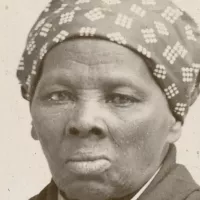Coney Island is a well-known neighborhood and entertainment area located in Brooklyn, New York City. Bordered by Brighton Beach, Lower New York Bay and Gravesend, it includes the Sea Gate subsection. The Coney Island peninsula encompasses Coney Island, Brighton Beach, and Manhattan Beach. Originally an Outer Barrier island off Long Island's southern shore, land reclamation projects in the early 20th century connected it to the mainland. Coney Island is known for its amusement parks, beach, and distinctive atmosphere, making it a popular destination for locals and tourists alike.
1901: Brooklyn Public Library Coney Island Branch Opening
In 1901, the Coney Island branch of the Brooklyn Public Library (BPL) opened as an unmanned deposit station.
1902: Closure of Sea Lion Park
In 1902, Sea Lion Park, the first amusement park to charge entry fees, closed its doors.
1903: Opening of Luna Park
In 1903, Luna Park opened on the site of the former Sea Lion Park, featuring various attractions, exotic landscaping, and electric lighting. Its flagship ride was A Trip to the Moon, based on Jules Verne's novel.
1903: Luna Park Opens
Luna Park opened in 1903, becoming one of Coney Island's major amusement parks.
1904: Dreamland Opens
Dreamland opened in 1904 as one of Coney Island's major amusement parks.
1906: B&B Carousell Built
The B&B Carousell was built circa 1906-1909, featuring a traditional roll-operated fairground organ.
1907: Fire at Steeplechase Park
In 1907, a fire at Steeplechase Park caused the park to be completely rebuilt.
1909: Horse Racing Outlawed
In 1909, the original Coney Island resorts experienced a loss in patronage after horse racing was outlawed in New York state.
1909: B&B Carousell Built
The B&B Carousell was built circa 1906-1909, featuring a traditional roll-operated fairground organ.
1911: Dreamland Closes
Dreamland closed in 1911 after opening in 1904.
1911: Brooklyn Public Library Coney Island Branch Established
In 1911, the Coney Island branch of the Brooklyn Public Library (BPL) opened as an unmanned deposit station.
1915: Sea Beach Line upgraded to subway
In 1915, the Sea Beach Line was upgraded to a subway line, improving transportation to Coney Island.
1916: Nathan Handwerker starts selling hot dogs
In 1916, Nathan Handwerker started selling hot dogs at Coney Island for a nickel each, which led to the establishment of the Nathan's Famous hot dog chain.
1917: Construction of Coney Island–Stillwell Avenue station
From 1917 to 1920, the Coney Island–Stillwell Avenue station was built as a replacement for the former surface-level Culver Depot.
1919: Opening of the Stillwell Avenue Station
In 1919, the opening of the Stillwell Avenue station marked the beginning of Coney Island's busiest era.
1920: Construction of Coney Island–Stillwell Avenue station
From 1917 to 1920, the Coney Island–Stillwell Avenue station was built as a replacement for the former surface-level Culver Depot.
1920: Opening of the Wonder Wheel
In 1920, the Wonder Wheel opened, adding to Coney Island's attractions.
1920: Wonder Wheel Opens
In 1920, the Wonder Wheel opened. It is a steel Ferris wheel with both stationary and rocking cars.
1921: The Comet Coaster Built
The Comet roller coaster was built in 1921 next to the Cyclone's current site.
1923: Construction of the Riegelmann Boardwalk
In 1923, the Riegelmann Boardwalk was constructed, improving crowd flow in the Coney Island area.
1923: City Buys Waterfront Land
In 1923, the city bought all the land on the waterfront and created the Riegelmann Boardwalk and Beach, making the beaches public.
1923: Childs Restaurant Constructed
The Childs Restaurant was originally constructed in 1923. It was renovated when the Ford Amphitheater was constructed in 2016.
1924: Portion of Coney Island Creek filled
By 1924, local landowners and the city had filled a portion of Coney Island Creek, connecting Coney Island to the rest of Brooklyn.
1925: Opening of the Shore Theater
In 1925, the Shore Theater opened in Coney Island, adding to the area's entertainment options.
1925: Original Thunderbolt Coaster Constructed
In 1925, the original wooden Thunderbolt coaster was constructed between West 15th and West 16th Streets.
1927: Coney Island Cyclone Opens
The Coney Island Cyclone, one of the United States' oldest wooden roller coasters still in operation, opened in 1927.
1932: Conflagration at Coney Island
In 1932, one of the largest conflagrations at Coney Island left at least a thousand people homeless.
1937: Robert Moses publishes report on Coney Island redevelopment
In 1937, New York City parks commissioner Robert Moses published a report about the possible redevelopment of Coney Island, which would have entailed the addition of parking lots and reconstruction of part of the boardwalk.
1939: Parachute Jump Built
The Parachute Jump was originally built as the Life Savers Parachute Jump at the 1939 New York World's Fair.
1941: Construction of the Parachute Jump
In 1941, the Parachute Jump was constructed, enhancing Coney Island's appeal as an amusement destination.
August 1944: Luna Park Destroyed by Fire
In August 1944, Luna Park was destroyed by a fire, marking a significant loss for Coney Island.
1944: Luna Park Closes
Luna Park closed in 1944 after operating since 1903.
1945: The Comet Coaster Destroyed
The Comet roller coaster, built in 1921, was destroyed in 1945.
1946: New rides constructed at the end of World War II
In 1946, at the end of World War II, two new rides were constructed in Coney Island despite earlier delays due to material shortages.
1949: Luna Park Land Transferred to Parks Department
In 1949, the city granted Robert Moses' request to transfer Luna Park's land along the Coney Island waterfront to the Parks Department, later rezoning it for residential use.
1953: Moses proposes rezoning of Coney Island
In 1953, Robert Moses proposed rezoning most of the Coney Island peninsula for various uses, leading to public complaints and the reinstatement of an amusement-only zone.
1953: New York Aquarium Building Approved
In 1953, a new building for the New York Aquarium was approved for construction in Coney Island.
1954: Brooklyn Public Library Built
In 1954, another branch was built for the Brooklyn Public Library (BPL).
1954: Construction started on the New York Aquarium
In 1954, construction began on the new New York Aquarium in Coney Island, with expectations of revitalizing the area.
1955: Coney Island amusement areas
In 1955, Coney Island still included four children's amusement areas, five roller coasters, several flat and dark rides, and various other attractions such as the Wonder Wheel.
1955: Proposal to extend boardwalk denied
In 1955, Robert Moses's proposal to extend the Coney Island boardwalk east to Manhattan Beach was denied.
1955: Oriental Scenic Railway Demolished
In 1955, the Oriental Scenic Railway, created in 1887, was demolished and replaced with a "hot rod" amusement ride.
1956: Last Circus Performance Before 2009
The Ringling Bros. and Barnum & Bailey Circus had not performed in Coney Island since 1956, until their performance in 2009.
June 1957: New York Aquarium opens
In June 1957, the New York Aquarium's new site opened in Coney Island, further solidifying the area as an amusement destination.
1957: New York Aquarium Opens
In 1957, the New York Aquarium opened on the former site of the Dreamland amusement park.
1961: Coney Island Population
In 1961, Coney Island had 34,000 residents.
1962: Astroland Opens
Astroland opened in 1962 at the site of the current Luna Park.
1962: More of Coney Island Creek filled for Verrazzano-Narrows Bridge construction
In 1962, more fill was added to Coney Island Creek during the construction of the Verrazzano-Narrows Bridge.
1964: Decrease in Coney Island visitors
During the summer of 1964, there was a large decrease in the number of visitors to Coney Island, as concessionaires saw their lowest profits in a quarter-century and ride operators reported 30% to 90% fewer visitors compared to the previous year.
1964: Steeplechase Park Closed
In 1964, Steeplechase Park, the last remaining large amusement park in Coney Island, closed permanently after the season.
1965: Continuing decrease in visitors
During the summer of 1965, Coney Island experienced a continuing decrease in the number of visitors due to factors such as the 1964/1965 World's Fair, crime increases, and insufficient parking facilities.
1965: Trump announces plan to build luxury apartments
In 1965, developer Fred Trump announced his intention to build luxury apartments on the old Steeplechase property in Coney Island.
1966: Population growth
By 1966, Coney Island's population nearly tripled to almost 100,000 people due to new housing developments.
1966: Efforts to Revitalize Coney Island
During 1966, developers tried to revitalize the Coney Island boardwalk as an amusement area. Trump destroyed Steeplechase Park's Pavilion of Fun. Trump proposed building a 160-foot-high enclosed dome with recreational facilities and a convention center.
January 1968: Proposal for "Open-Space" State Park
In January 1968, New York City parks commissioner August Heckscher II proposed that the New York state government build an "open-space" state park on the Steeplechase site.
1969: Condemnation of Steeplechase Park Site
In 1969, condemnation of the Steeplechase Park site started, with the city ultimately purchasing the proposed park's site for $4 million, preventing Trump from developing apartments there.
1975: Coney Island Cyclone fate and unified admission ticket
By 1975, the city considered demolishing the Coney Island Cyclone, but it was refurbished and reopened after public controversy. Additionally, middle-class families started returning to Coney Island following the implementation of a unified admission ticket to Coney Island's amusement areas.
1975: HUD Grant Threatened
In 1975, the United States Department of Housing and Urban Development (HUD) nearly withdrew a proposed grant of $2 million to fund a proposed state park in Coney Island, due to the city's continued litigation over the site occupied by Norman Kaufman and lack of a plan for the park.
1979: Casino Proposal
In 1979, Mayor Ed Koch proposed opening casinos in New York City, including Coney Island, to revitalize the area's economy. This proposal generated both support and substantial controversy.
1980: Kaufman's Site Closure
In 1980, Norman Kaufman continued to operate his amusement site until the end of the summer.
1980: Parachute Jump Listed on NRHP
In 1980, the Parachute Jump was listed on the National Register of Historic Places (NRHP).
1980: Coney Island Museum Opens
The Coney Island Museum, operated by Coney Island USA, opened in 1980. It is a collection of memorabilia chronicling the history of the neighborhood.
1981: Gambling Legalization Fails
By 1981, the state's interest in legalizing gambling had subsided, and the New York State legislature failed to take action on the proposal to open casinos, including those proposed for Coney Island.
1982: City Advertises Redevelopment
In November 1982, having acquired Kaufman's rides, the New York City government began advertising for developers to redevelop the former amusement park area.
1983: Original Thunderbolt Coaster Closes
In 1983, the original wooden Thunderbolt coaster closed.
1985: Steeplechase Park Rebuilding Approved
In 1985, the city approved Horace Bullard's project to rebuild Steeplechase Park, a $55 million amusement park based on the original, on the site bounded by West 15th and 19th Streets between Surf Avenue and the boardwalk.
December 1986: Minor-League Stadium Proposal
In December 1986, the New York State Urban Development Corporation formally proposed a 17,000-seat minor-league baseball stadium north of the boardwalk between West 19th and West 22nd Streets as well as a 15,000-seat indoor arena north of the Abe Stark Rink.
1986: Steeplechase Park Opening Delayed
In 1986, Bullard planned to open the rebuilt Steeplechase Park by mid-year to coincide with the Statue of Liberty's centennial. However, the project was delayed while the New York City Planning Commission compiled an environmental impact report.
1987: Steeplechase Park Cost Doubles
By early 1987, the cost of the Steeplechase Park rebuilding project nearly doubled to $100 million.
1988: Cyclone Designated a City Landmark
In 1988, the Coney Island Cyclone was designated a city landmark.
1989: Amusement Park Contract Ready
By 1989, Bullard and the city were ready to sign a contract that would allow the developer to construct a 60-ride amusement park on a 25-acre waterfront strip, which would be completed by 2002.
1989: Parachute Jump and Wonder Wheel Designated Landmarks
In 1989, the Parachute Jump and the Wonder Wheel were designated as New York City landmarks.
1989: Parachute Jump Landmark Status
In 1989, the Parachute Jump was made a city landmark.
1989: Wonder Wheel Landmark Status
In 1989, the Wonder Wheel was designated a city landmark.
1990: Storefront Decline
By 1990, storefronts on Mermaid Avenue had decreased by 90%, from over 400 stores before the urban renewal to 39 stores afterward.
1990: Crime Rate Decrease Since 1990s
The 60th Precinct has a substantially lower crime rate than in the 1990s, with crimes across all categories having decreased by 77.5% between 1990 and 2022.
1991: Cyclone Listed on the NRHP
In 1991, the Coney Island Cyclone was listed on the National Register of Historic Places (NRHP).
1993: Major Crime Reduction Since 1993
Between 1993 and 2010, major crimes decreased by 72% in Coney Island.
1994: Bullard Deal Negated
In 1994, Mayor Rudy Giuliani negated the Bullard deal and approved the construction of a minor-league baseball stadium on the site allotted for Steeplechase Park.
1996: Housing Development Completed
In 1996, a four-phase, 873-unit housing development in Coney Island was completed.
1997: Entertainment Complex Proposed
In 1997, developer Bruce Ratner proposed constructing a $100 million entertainment complex between West 9th and West 15th Streets, featuring a "virtual-reality amusement park" and a movie theater multiplex.
1998: Sportsplex and Entertainment Complex Canceled
In 1998, Giuliani canceled Sportsplex and the entertainment complex, and instead unveiled a plan to build only the parking lot. The Thunderbolt was demolished instead of being restored.
2000: Math Achievement Increase
In 2000, math achievement rose from 53 percent in Coney Island.
2000: Keyspan Park Approved
In 2000, the city approved the $31 million project to construct Keyspan Park using funds from the canceled Sportsplex. Other major projects included the reconstruction of Coney Island's sewers.
2000: 2000 Census Data
In 2000, the combined population of Coney Island and Sea Gate was 34,267, according to the United States Census.
2000: Original Thunderbolt Coaster Torn Down
In 2000, the original wooden Thunderbolt coaster was torn down during the construction of nearby Keyspan Park.
2001: Rebuilding of Coney Island–Stillwell Avenue station
From 2001 to 2004, the Coney Island–Stillwell Avenue station was rebuilt.
2001: Maimonides Park Opens as KeySpan Park
In 2001, Maimonides Park opened as KeySpan Park, hosting the Brooklyn Cyclones minor league baseball team.
2001: Opening of Maimonides Park
In 2001, the venue now known as Maimonides Park opened, revitalizing the Coney Island area.
2002: Target Completion Date
By 2002, the planned completion date for a 60-ride amusement park on a 25-acre waterfront strip.
2003: Bloomberg Revitalization Interest
In 2003, Mayor Michael Bloomberg took an interest in revitalizing Coney Island, considering it as a possible site for the New York City bid for the 2012 Summer Olympics.
2004: Rebuilding of Coney Island–Stillwell Avenue station
From 2001 to 2004, the Coney Island–Stillwell Avenue station was rebuilt.
2004: Coney Island History Project Founded
In 2004, the Coney Island History Project (CIHP) was founded to collect stories from longtime residents, record oral history interviews, and share information about Coney Island's history.
September 2005: Thor Equities Unveils Plans
In September 2005, Thor's founder, Joe Sitt, unveiled his new plans for a large Bellagio-style hotel resort with a timeshare development, surrounded by rides and amusements in Coney Island.
2005: Stillwell Avenue Subway Station Refurbishment Completed
In 2005, the refurbishment of the Stillwell Avenue subway station was completed.
November 2006: Astroland Sold to Thor
In November 2006, Astroland owner Carol Hill Albert sold the site to Thor Equities.
2006: Elementary School Quality
In 2006, David Scharfenberg of The New York Times noted that Coney Island's elementary schools had mixed performance, with some exceeding citywide averages on state tests.
2006: Zipper and Spider Dismantled
In 2006, The Zipper and Spider on West 12th Street were closed permanently and dismantled.
2006: AVP Tournament Hosted in Coney Island
In 2006, a major national volleyball tournament hosted by the Association of Volleyball Professionals (AVP) was held in Coney Island, with a 4,000-seat stadium built for the event.
2007: Rezoning Plan Circulated
In 2007, the DCP started circulating a rezoning plan that would cover 47 acres of Coney Island. The city would spend $120 million to redevelop 15 acres into an amusement park surrounded by around 5,000 new housing units.
April 2008: Revised Rezoning Proposal
In April 2008, due to objections from land owners, residents, and developers, the city revised its Coney Island rezoning proposal. Only 9 acres would be used as an amusement park.
2008: Astroland Closes
Astroland closed in 2008 after operating since 1962.
January 2009: Rezoning Plan Certified
In January 2009, the DCP certified the Coney Island rezoning plan, which allowed the city to create a 9.4-acre amusement district.
June 2009: Housing Construction Approved
In June 2009, the city's planning commission approved the construction of 4,500 units of housing, including 900 affordable units, in Coney Island.
2009: Second Dreamland Operates for One Season
A second Dreamland operated at the site of the former Astroland for only the 2009 season.
2009: New Dreamland Opened
In 2009, a new Dreamland replaced Astroland.
2009: Ringling Bros. and Barnum & Bailey Circus Performed
In 2009, the Ringling Bros. and Barnum & Bailey Circus performed in Coney Island for the first time since 1956 with "The Coney Island Boom-A-Ring."
2009: 2009 Rezoning
The city also expressed its intent to demolish the Abe Stark Rink and redevelop the site, as per the 2009 rezoning, though residents wanted NYC Parks to retain control over the site rather than sell it off to a private developer.
2010: 2010 Census Data
Based on data from the 2010 United States Census, the combined population of Coney Island and Sea Gate was 31,965.
2010: Park Renamed MCU Park
In 2010, KeySpan Park was renamed MCU Park after the Municipal Credit Union (MCU).
2010: New Luna Park Opened
In 2010, a new Luna Park opened.
2010: 60th Precinct Crime Ranking
In 2010, the 60th Precinct ranked 34th safest out of 69 patrol areas for per-capita crime.
April 2011: New Roller Coasters Opened
In April 2011, the first new roller coasters in eighty years opened at Coney Island.
2011: Thor Equities Project Completion Target
In 2011, Thor Equities had hoped to complete a project.
2011: Math Achievement Increase
In 2011, math achievement rose to 72 percent in Coney Island, while reading achievement fell from 57 to 55 percent.
2012: Hurricane Sandy Damage
In 2012, Hurricane Sandy caused major damage to the Coney Island amusement parks, the Aquarium, and businesses.
2012: NYC Olympic Bid Lost
When the city lost the Olympic bid in 2012, revitalization plans were passed to the Coney Island Development Corporation (CIDC), which made modified plans.
March 24, 2013: Luna Park Reopened
On March 24, 2013, Luna Park at Coney Island reopened as scheduled after Hurricane Sandy.
2013: B&B Carousell Relocation
In 2013, the B&B Carousell was relocated to Luna Park's Steeplechase Plaza.
2013: Brooklyn Public Library Rebuilt
In 2013, the Coney Island branch of the Brooklyn Public Library (BPL) was rebuilt after being damaged in Hurricane Sandy.
March 2014: Construction of Thunderbolt Roller Coaster Begins
In March 2014, construction commenced on the new Thunderbolt, a steel roller coaster manufactured by Zamperla.
June 2014: Thunderbolt Roller Coaster Opens
In June 2014, the Thunderbolt roller coaster officially opened.
May 2015: Coney Art Walls Unveiled
In May 2015, Thor Equities unveiled Coney Art Walls, a public art wall project curated by Jeffrey Deitch and Joe Sitt, featuring work from more than 30 artists.
2015: AVP Tournaments Move to Brooklyn Bridge Park
In 2015, AVP tournaments, upon their resumption in Brooklyn, were hosted at Brooklyn Bridge Park instead of Coney Island.
June 2016: Ford Amphitheater Opens
In June 2016, the Ford Amphitheater at Coney Island opened, hosting live musical acts and other events.
July 2016: Childs Restaurant Rooftop Reopens
In July 2016, the rooftop part of the renovated Childs Restaurant reopened.
2016: Median Household Income
As of 2016, the median household income in Community District 13 was $39,213.
2016: B&B Carousell Listed on National Register
In 2016, the B&B Carousell was listed on the National Register of Historic Places.
2016: Ford Amphitheater Opened
In 2016, the Ford Amphitheater at Coney Island, a live performance venue, opened on the boardwalk.
2018: Violent Crime and Incarceration Rates
As of 2018, Coney Island's rate of violent crimes per capita is less than that of the city as a whole, with a non-fatal assault rate of 51 per 100,000 people. The incarceration rate of 168 per 100,000 people is about the same as that of the city as a whole.
2018: Health Statistics in Coney Island
As of 2018, preterm births and births to teenage mothers are slightly more common in Coney Island than in other places citywide, and a high percentage of residents are uninsured.
2018: New York Aquarium Exhibits
As of 2018, the New York Aquarium consists of five exhibits: Aquatheater; Conservation Hall; Sea Cliffs; Sharks, Rays & Turtles; and Ocean Wonders: Sharks.
2018: Community Board 13 Health Profile
As of NYC Health's 2018 Community Health Profile, Community Board 13 had 106,459 inhabitants with an average life expectancy of 80.4 years.
2018: Aquarium Expansion Opened
In 2018, a major expansion of the New York Aquarium opened.
2018: Poverty and Unemployment Rates
In 2018, an estimated 24% of Coney Island residents lived in poverty, and 11% were unemployed. Rent burden was 55%.
2019: Bumper Cars and Dark Rides Operation
As of 2019, several bumper car rides, including one in Deno's Wonder Wheel Park and Eldorado Auto Skooter, and two traditional dark ride haunted houses (Spook-a-Rama and Ghost Hole) are operating at Coney Island.
2019: NYC Ferry Announces Coney Island Route
In 2019, NYC Ferry announced that the western part of Coney Island would be served by the Coney Island ferry route.
2019: Annual Coney Art Walls Exhibition
The Coney Art Walls exhibition, which began in May 2015, has been held annually through at least 2019.
2020: 2020 Census Data
According to the 2020 census data, there were between 20,000 and 29,999 White residents, 10,000 to 19,999 Black residents, 5,000 to 9,999 Hispanic residents, and less than 5000 Asian residents in Coney Island.
2020: Oral History Archive Available Online
As of 2020, over 370 interviews were available online via the Coney Island History Project Oral History Archive.
2020: COVID-19 Pandemic Impact
In 2020, the COVID-19 pandemic in New York City put many construction projects on hold. The businesses and amusement parks at Coney Island either operated in a sharply reduced capacity or did not open at all.
2020: Coney Island census
In 2020, the United States census recorded approximately 32,000 residents in Coney Island, noting the ethnic diversity and a poverty rate of 27%, slightly higher than the city's average.
October 2021: Luna Park Expansion Commenced
In October 2021, Luna Park's expansion commenced.
2021: MCU Naming Rights Deal Ends
In 2021, the eleven-year naming rights deal with the Municipal Credit Union (MCU) ended.
April 2022: Casino Licenses Announcement
In April 2022, New York state officials announced they would issue three casino licenses in Downstate New York.
November 2022: Casino Proposal
In November 2022, Sitt proposed constructing a casino at Coney Island to attract tourists.
2022: 60th Precinct Crime Statistics
In 2022, the 60th Precinct reported five murders, 16 rapes, 179 robberies, 373 felony assaults, 159 burglaries, 527 grand larcenies, and 121 grand larcenies auto.
2022: Delay of Coney Island Ferry Route Implementation
In 2022, the implementation of the Coney Island ferry route was delayed indefinitely.
2023: Apartment Buildings Construction
By 2023, half a dozen apartment buildings had been or were being built along Surf Avenue.
2023: Coney Island Sinking Study
In 2023, a study found that Coney Island was sinking at a rate of about 2.6 ± 0.8 millimeters (0.102 ± 0.031 in) per year, making it among the fastest-sinking locations in New York City; this is mainly because parts of the neighborhood were created by land reclamation.
2024: Community Board Vote on Casino Rezoning
In early 2024, Brooklyn Community Board 11 voted to allow Coney Island to be rezoned for casino use, despite opposition from some residents.
February 2025: Coney Island West Project Announced
In February 2025, the city government announced plans for the Coney Island West project, which would include 1,500 housing units on the peninsula's western end, as well as upgrades to the Stark Rink and the Riegelmann Boardwalk's western section.
June 27, 2025: Casino License Bid Submission
On June 27, 2025, the developers of the Coney Island casino project, including Thor Equities, Legends Hospitality, Saratoga Casino Holdings, and the Chickasaw Nation, submitted their bid for a commercial casino license.
Mentioned in this timeline

Michael Bloomberg is an American entrepreneur politician and philanthropist He...

Rudy Giuliani is an American politician and disbarred lawyer best...

The lion Panthera leo is a large cat species native...

Frederick Christ Trump Sr - was an American real estate...
Medicaid is a joint federal and state government program providing...

A car also known as an automobile is a wheeled...
Trending

2 days ago Caitlin Clark's soaring earnings: $114K WNBA salary, $16M sponsors despite injury in 2025.

7 months ago Kenan Thompson Addresses Constant Confusion With Kel Mitchell, Good Sport About Fan Mix-Ups

6 months ago Ken Burns' documentary aims to unite US; Filmmakers emulate Burns' style.

6 months ago Deborra-Lee Furness files for divorce from Hugh Jackman amidst Sutton Foster affair rumors.

4 months ago Jon Bon Jovi and Dorothea to Speak at Power of Pink Fundraiser's 30th Year

7 months ago The Weeknd's Late Night Interview Debut with Fallon, Bart Simpson's Fallon Ignorance.
Popular
Matt and Ross Duffer known as the Duffer Brothers are...
Aftyn Alyssa Behn is an American politician currently serving as...

Candace Owens is an American conservative political commentator and author...

XXXTentacion born Jahseh Dwayne Ricardo Onfroy was a controversial yet...

Ilhan Omar is an American politician currently serving as the...

Harriet Tubman was a pivotal American abolitionist and social activist...

